My upcycle project merges the aesthetics of Hyperbolic Distortion and Bee-Core, drawing inspiration from their shared principles of spatial manipulation, organic curvature, and natural algorithms. While exploring their opposites, I noted the intriguing similarities between these two seemingly distinct styles, which revealed unexpected connections in their approach to form and space.
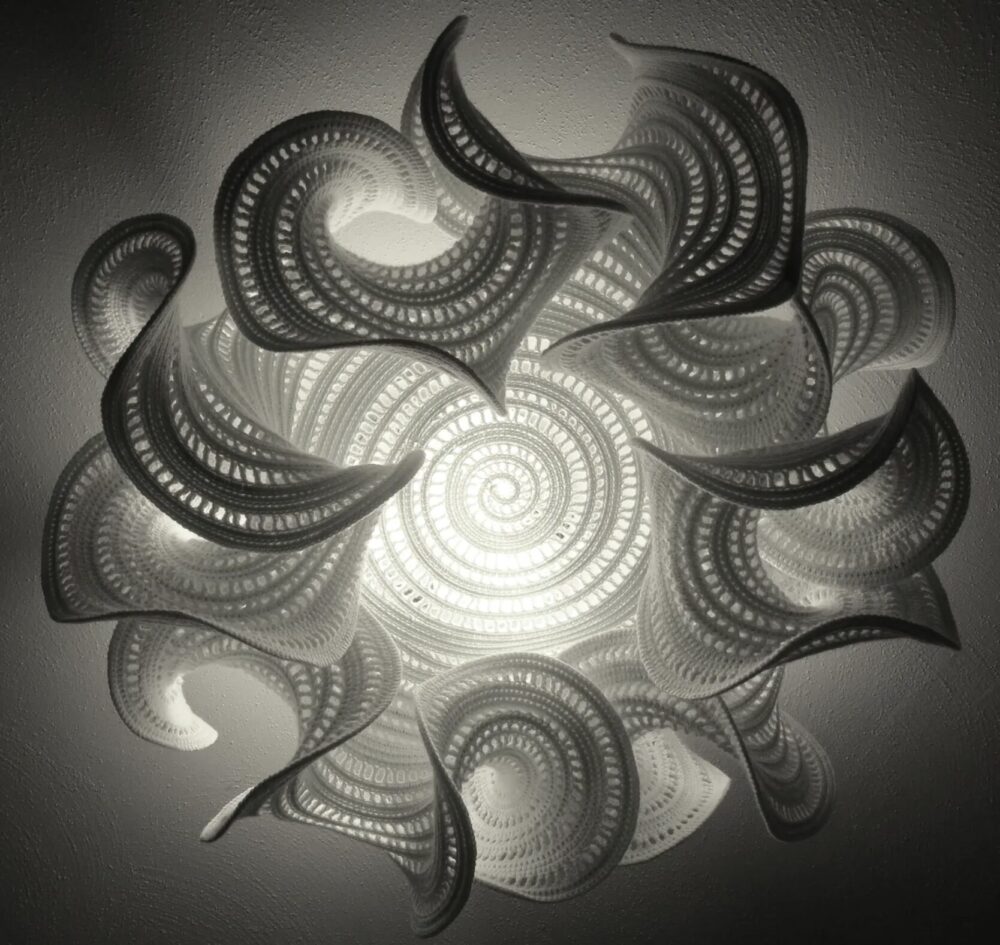
Hyperbolic Distortion thrives on exaggerated, otherworldly curves that defy traditional straight-edge geometry, creating warped and fluid forms that feel almost alien. These forms challenge our perception of space, suggesting movement and flow even in static objects. The style often incorporates elements of mathematical complexity while maintaining an organic feel, much like the patterns found in coral reefs or the undulating surfaces of underwater organisms.
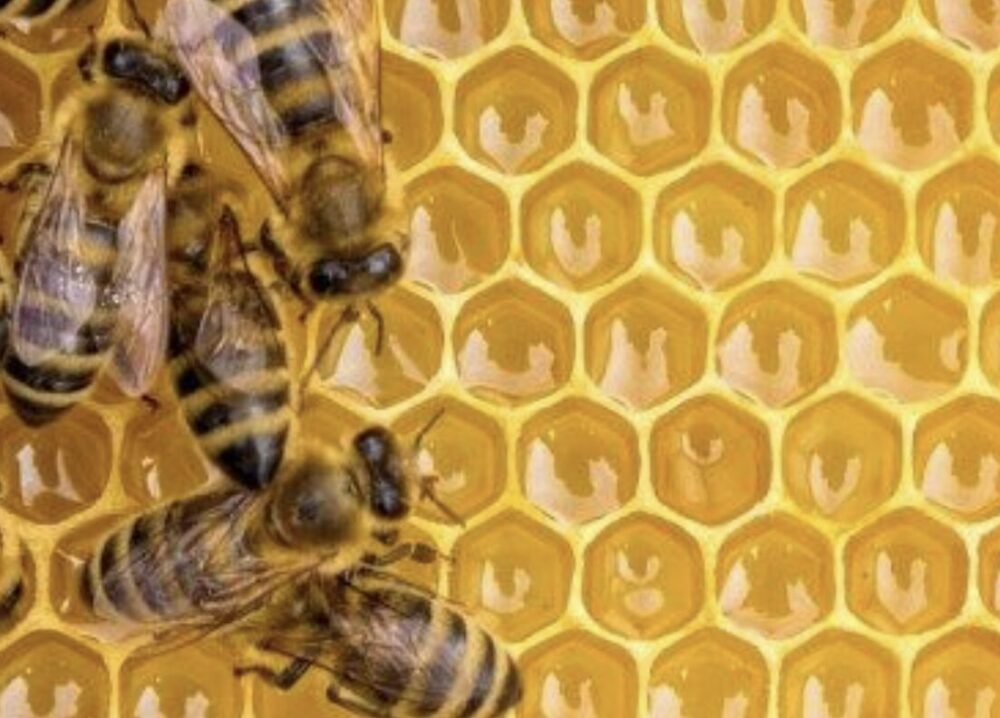
The structured beauty of Bee-Core, while appearing more ordered at first glance, is rooted in the hexagonal symmetry of honeycombs, a pattern that emerges not from rigid design but from the natural distortion of beeswax cylinders as they are shaped by the collective movements of a hive. This process demonstrates nature’s remarkable ability to create efficient, beautiful structures through organic processes rather than predetermined blueprints. The resulting forms combine mathematical precision with natural variation, creating a harmonious balance between order and organic growth.
Both aesthetics, in their own way, challenge conventional spatial logic—whether through extreme curvature and warping or through the organic efficiency of tessellated structures. They share a fundamental connection to natural processes and mathematical principles, though they express these connections differently. Hyperbolic Distortion embraces chaos and fluidity,

while Bee-Core reveals the underlying order in natural systems.
When considering the opposite of my aesthetic, I think of strict precision, rigid geometry, and an absence of organic flow. Unlike the fluid, curving forms of Hyperbolic Distortion or the natural tessellations of Bee-Core, this opposing style is defined by harsh lines, solid structures, and a utilitarian approach to space. Brutalism, with its emphasis on raw materials, monolithic forms, and a lack of color or ornamentation, stands in direct contrast to both styles.
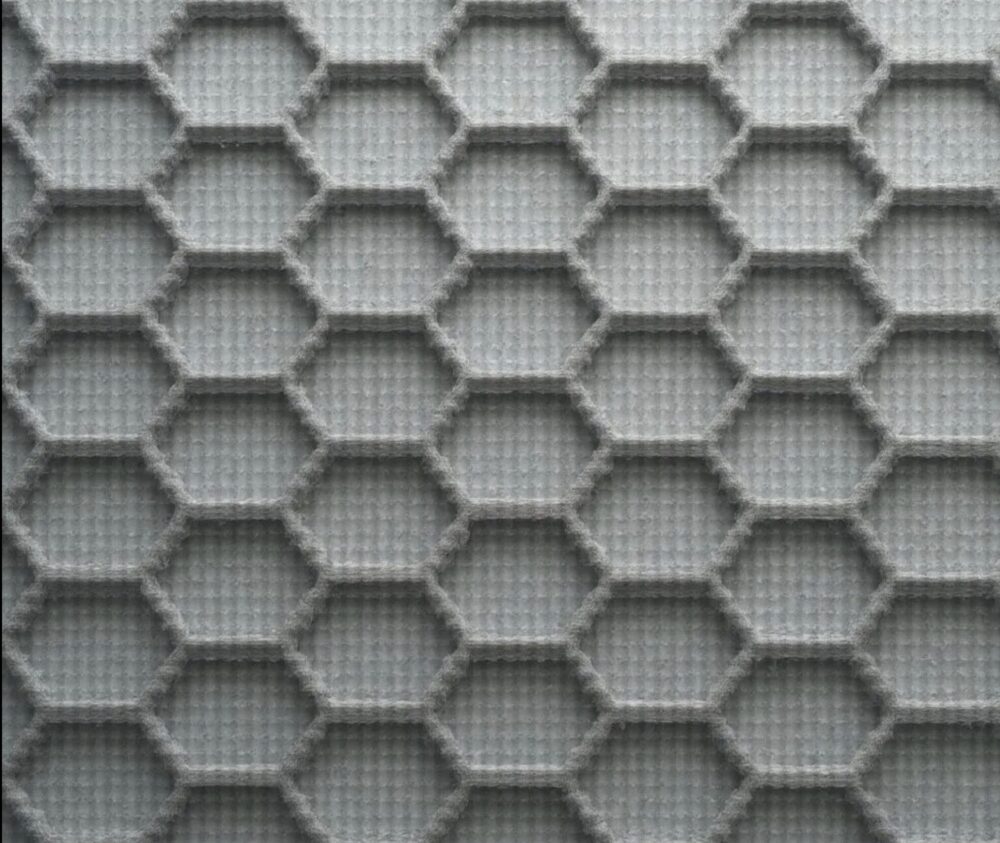
The brutalist interpretation of these organic patterns, as shown in the AI-generated image to the left, demonstrates this stark contrast. The honeycomb pattern, typically associated with natural growth and organic processes, takes on a different character when rendered in the brutalist style. The harsh geometries and unforgiving materials transform the usually soft, organic forms into something more industrial and imposing. I would imagine the use of metals and stone giving the piece a harsh, simple, but clean look, completely inverting the warm, flowing qualities of both Hyperbolic Distortion and Bee-Core.
This exploration of opposites has deepened my understanding of both my chosen aesthetics and their relationship to architectural and design history. It highlights how different approaches to form and space can create dramatic contrasts while still maintaining elements of mathematical and structural integrity.
Works Cited
[1] Meyer, Gabriele. 2013. “Gabriele Meyer.” Bridges Math Art Galleries. 2013 Bridges Conference. https://gallery.bridgesmathart.org/exhibitions/2013-bridges-conference/gabriele_meyer. [2] Pinterest. n.d. “Curved Wooden Sculpture.” Accessed February 10, 2025. https://www.pinterest.com/pin/613334042990762435/. [3] Iconeye. 2023. “The Concrete Collective: A Guide to Brutalism in London.” November 1, 2023. https://www.iconeye.com/architecture/the-concrete-collective-a-guide-to-brutalism-in-london. [4] PromeAI. n.d. “Home.” Accessed February 10, 2025. https://www.promeai.pro/home.
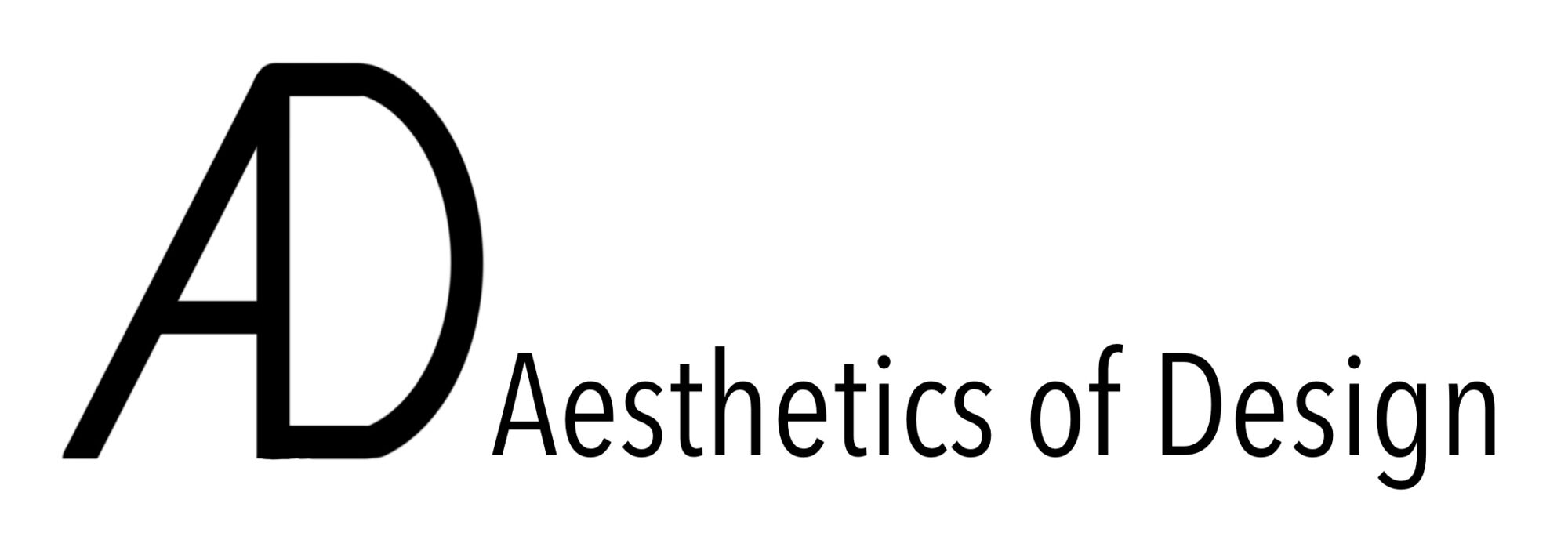
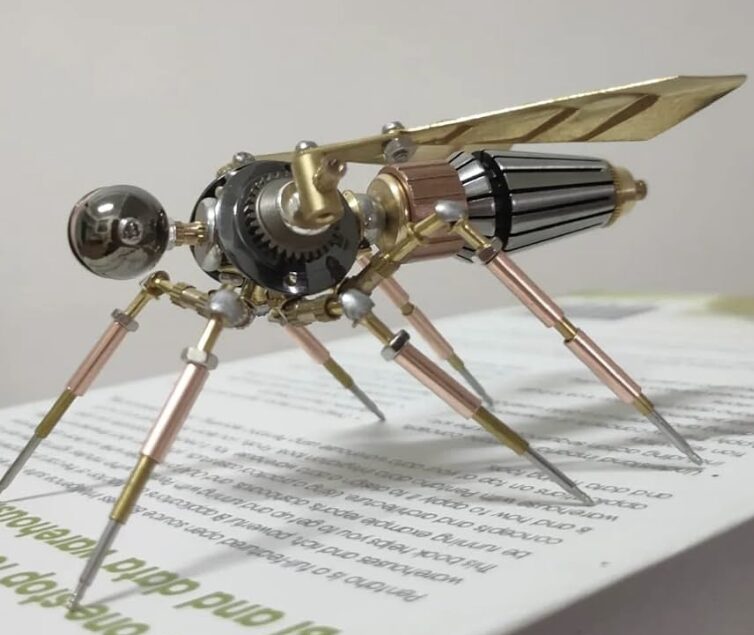
2 Comments. Leave new
Sylvia, what a great aesthetic selection and combination, cant wait to see what you create. This combination reminds me of the complex geometries constructed by generative design, also known as topology optimization. If you are not familiar with this design technique I highly recommend you check it out as it is essentially a combinatory process of hyperbolic geometries and natural patterns to form parts with perfect geometries to their associated function: https://medium.com/healthcare-3d-printing-stories/generative-design-versus-topology-optimization-ed549dbf19b4
Additionally, I like how you created the example of the brutalist honeycomb, and how simply changing the materials and colors of the shape can starkly change the “feel.” Are you familiar with the research on how geometries can affect human behavior in a space? It’s further evidence for the “opposite” you have been poking at. Numerous studies demonstrate the positive effects on mental health and human well being in spaces which incorporate these biophilic inspired fractal geometries: https://pmc.ncbi.nlm.nih.gov/articles/PMC8416160/
Thanks!
Andrea
Hey Andrea,
That is so cool that you mention that! Topological optimization, and the application of non Euclidean are special interests of mine, and major inspirations for my current studies and projects. More recently I have been learning about generative design and am absolutely going to give the articles a read.
Are these topics of interest to you as well? Has it inspired some of your designs?